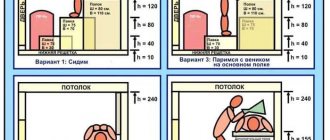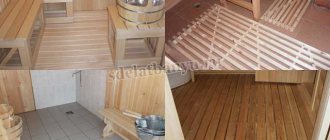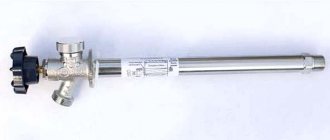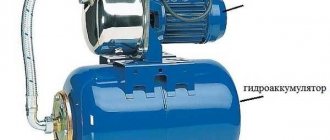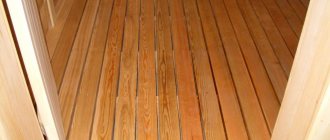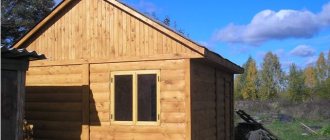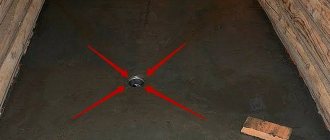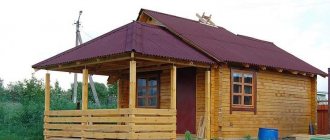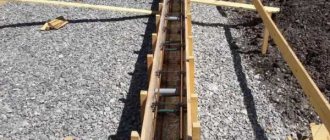To accumulate heat and maintain optimal temperature conditions in the steam room, modern insulation materials are used. However, the main disadvantage of such materials is their high moisture absorption, which leads to a decrease in thermal insulation properties and the gradual destruction of the wooden structure.
An effective way to solve this problem is a vapor barrier in a bathhouse, which will provide reliable protection for insulating materials.
Why do you need a vapor barrier for a bathhouse?
All the insulation materials filling today’s market make it possible to accumulate heat and maintain the required temperature levels. However, their main drawback lies in their abundant moisture absorption. As a result, the thermal insulation characteristics are reduced, which means the structure of the bathhouse itself is destroyed. This problem can be solved simply by forming a vapor barrier that protects the insulating gasket.
Why do you need a vapor barrier for a bath in a Russian steam room?
Classically, baths are insulated with basalt wool. It copes with its tasks quite well until it gets wet; as humidity increases, its performance characteristics deteriorate sharply. And if it freezes while wet, it may completely crumble.
Why do you need a vapor barrier in a sauna?
The air in saunas is known to be much drier. And yet, it is recommended to install at least a vapor barrier in the ceiling so that the insulation in it does not collect condensation when the microclimate in the room changes. Standard materials that can function in extreme heat are quite suitable.
What is it for?
The main purpose of this structural element of the ceiling cake is to protect its remaining elements from getting wet.
Everything seems to be clear. However, a logical question arises: is it needed in the entire bathhouse or can it be limited to the rooms that are the most humid - the steam room and the washing room?
The answer to this is simple: no, you cannot limit yourself to a steam room and a washing room, because vapor barrier is part of the standard ceiling pie, regardless of the room in which it is being built. Why is that?
Because the main element that needs protection is
the thermal insulation material , which lies at a higher level.
Since in most cases this is mineral wool, the mats of which are most affordable and easy to install, one must also take into account the property of this material, such as sensitivity to the accumulation of condensate in its thickness. The fact is that moisture accumulating between the fibers of stone wool significantly reduces its thermal insulation properties. After all, the main heat insulator is always air. We simply create a heat-resistant environment for it in the form of thin mineral wool fibers or clay partitions in expanded clay balls. Water, on the contrary, connects the fibers (this does not apply to expanded clay, the clay is baked there, and water does not get inside the balls), improving the conductivity of heat through this medium .
Condensation forms not only when the room is very humid, but also when there is a temperature difference between what is inside and what is outside.
And humidity is present in any room and outside it; it is a natural component of the air. CONCLUSION! Ceiling insulation is more a tribute to the properties of the heat insulator and wooden structures, which also do not tolerate moisture well, collapsing from it, rather than a characteristic feature of a bathhouse or specifically a steam room with a washing room.
In the Russian steam room
The above does not mean that a steam room or washing room does not need increased protection from moisture. Steam is water droplets heated and suspended in the air, rising upward towards the ceiling.
If you don't put an obstacle in place, they will go higher, settling on the colder parts of the structures. In terms of the amount of steam, the Russian steam room is second only to the Turkish hammam, but it is usually finished with tiles or mosaics, which makes it less sensitive. The Russian steam room is traditionally finished with wood, and if its surface layer, for example, lining, is inevitably sacrificed and takes on all the blows of increased temperature and humidity, then the inner layers can (and should) be protected.
We will talk about the methods of vapor barrier of the ceiling in a bathhouse a little lower, but for now it is important to draw conclusions - a Russian steam room clearly needs a well-thought-out and powerful vapor barrier. Does the same apply to the sauna?
In the sauna
It is not for nothing that the Finnish sauna is called “dry air”. In the orthodox version, the humidity in the sauna is minimal, amounting to no more than 5-15%. The Finns don’t pour much water on the stones, which is understandable - they either lay them out in a mound on top of the stove, or in a mesh covering the body, and this does not give the stones the heat needed to produce light, fine steam. Instead, the steam is thick and heavy.
In addition, the high temperatures of the Finnish steam room do not allow a person to easily absorb excess steam.
IMPORTANT! There is a rule - the higher the temperature, the less steam is needed for people to feel comfortable in the steam room. The reverse is also true.
The third essential property of a sauna is vigorous air exchange , which is achieved using natural or forced ventilation.
Let's summarize: the sauna has good ventilation and high temperature, both of which help eliminate excess moisture, so even the surface layer of the ceiling will not suffer much during the procedures. However, insulation of the ceiling is mandatory, which means you need to make sure that the insulation does not accumulate condensation even due to temperature differences. Therefore, it still needs to be insulated , except that the vapor barrier itself can be standard, but (since the temperature in the sauna is high) it must be designed for exposure to heat.
Proper waterproofing of the top of the insulation will also help, but more on that later.
What is the difference between vapor barrier and waterproofing?
In any case, we are talking about contact with moisture, but when we talk about protection from steam, we also mean the need to escape from high temperatures. If we draw a clear difference between these two concepts, we can say this:
- A layer of vapor barrier is required to prevent indoor vapor from turning into condensation when encountering cooler temperatures outside.
- Waterproofing is carried out to protect against absolutely any moisture: both vapors and ordinary precipitation.
If we are talking about insulating a ceiling structure, then the vapor barrier here acts as the bottom layer, and waterproofing as the top. It is important to understand that there is a difference in the materials that are chosen for both cases. So, the vapor barrier should not let anything pass through it: neither steam, nor moisture, but the waterproofing needs to be made “breathable”: so that on one side it releases steam, and on the other, on the other hand, prevents their penetration.
Additional recommendations
The purpose of a vapor barrier is to prevent water in gaseous form from penetrating into the insulation and into the floor material. When the installation of the vapor barrier is completed, all the moisture will remain in the room; it will not be possible to get rid of it without forced ventilation or installing a climate control system. It is believed that you will have to ventilate the room 1-2 times a day for 15-20 minutes; this rule applies to both residential and commercial premises. If you neglect ventilation, the room will become damp and mold will grow on furniture and things.
Another additional tip concerns the joints, or rather, the size of the overlap of two pieces of film. If the information is not in the instructions for the material, you will need to measure the angle of the roof. At a value of 30 degrees or less, it is enough to cover with the next piece of film up to 10 cm of the previous one. With a larger slope angle, this value increases to 20 cm.
When placing joints horizontally, the craftsman will have to make sure that the material from the top piece overlaps the edge of the bottom, and not vice versa. Indeed, if the horizontal joints are not properly designed, water flowing down will fall under the bottom film in case of any violations in the integrity of the fasteners.
What types of vapor barriers can be found on sale?
The modern market offers a huge number of vapor barrier materials; of course, this creates the problem of choice. How to determine the best option for yourself. Let's look at the most popular types.
Vapor barrier film
Perhaps the most widespread of all types of vapor barrier. In practice, this is an ordinary dense material. Different manufacturers offer models with both smooth and rough structures. Some are equipped with a reinforced mesh that protects against various types of damage.
Films are made of polyethylene and polypropylene. The difference is in the polymers. Polypropylene products have a higher price, since its melting point is higher than that of its polyethylene rival. Its obvious disadvantage is its fragility and intolerance to severe frosts.
In addition, the film may have perforations, this is important for multi-layer fabrics. But its advantages are not so obvious, since these holes are completely covered with dust during use.
Foil
This is the most optimal vapor barrier for a steam room. Metallized lavsan or foil become an excellent heat accumulator. This material does not allow steam to pass through. The only negative is that depressurization may occur in the areas of joints. In addition, the foil is very susceptible to mechanical damage, but it copes with the reflection of infrared radiation with a bang.
Foiled foam polymers
Various combination proposals based on foil are very popular. Thus, a polymer film protects the foil from damage, and it increases resistance to high temperatures.
Glassine, roofing felt
These resources result from ordinary cardboard being impregnated with bitumen from petroleum. You can choose them for a bath, although no one will recommend them to you as a priority. These are building materials that are relevant for budget buildings and may be acceptable if there is no alternative.
Kraft paper
A special construction cardboard, famous for its high density. Perfectly holds back steam flows, keeping them away from the heat insulator. Suitable for recreation areas without swimming pools and showers. You should not choose it for steam rooms, since it will spread due to high humidity and complete dismantling will be necessary.
Izospan
Manufacturers recommend choosing Izospan RS. It includes three layers of polymers, two of which are necessarily made from polypropylene bases. The first layer is an ordinary smooth canvas. Middle – reinforcing mesh. The third is non-woven material (such as felt), which forms the anti-condensation layer.
Izospan RS is vapor-tight, and its maximum operating temperature is 60-80 degrees, so it is not permissible in steam rooms, exclusively for premises for other purposes.
Vapor barrier manufacturers
Armitex-75 should be highlighted; it is very similar to Izospan, but without additional reinforcement. You should not ignore the Czech film Jutafol N. You can consider the Luxembourg vapor barrier AirGuard® Reflective. The Polish company Folder makes films, including foil ones. You can choose the Russian-Polish film Optima B. Under-roofing sheets made of ondulin are suitable for steam rooms.
Alternative types of materials
There is no alternative to isolon as such, but we would be wrong if we do not briefly talk about materials that in certain cases can replace it.
cotton wool
Cotton materials, which include mineral wool, glass and ecowool, have almost the same heat and sound insulation properties as isolon. Their manufacturers insist that their main advantages are:
- Lightweight and easy to install.
- Low thermal conductivity.
- Strength under compression, mechanical stress, ruptures.
- High sound insulation characteristics.
- Not susceptible to fire.
- Resistance to temperature deformation.
- Biological and chemical resistance.
Mineral wool is available in the form of rolls and sheets and has different softness and thickness. It is extremely easy to install structures using various types of wool:
- The walls must be covered with a steam or hydrobarrier using a stapler.
- The next step is to assemble the frame from special metal profiles, the assembly step is 50 centimeters.
- Then cotton wool is laid, carefully distributed throughout the entire space, avoiding gaps.
- Then the cotton wool is fixed in any convenient way, the structure is covered with sheets of plasterboard, plastic panels, clapboard, fiberboard.
- The final stage is finishing the walls; its type depends on what material you have chosen or what is available.
The disadvantage of the material is its allergenicity; you should work in protective gloves and a mask to prevent contact of the material with the mucous membranes and skin of the hands. It also requires additional vapor barrier, since it loses its properties from moisture. In principle, the technology is simple and you can easily do everything yourself without overpaying to contractors.
Foam plastic or its analogues
The undoubted advantages of polystyrene foam include the following:
- Polystyrene foam is not afraid of moisture.
- It is a good heat insulator.
- Not susceptible to rotting, fungal or mold stains.
- Easy to install and cut.
- Has low weight.
- Heat resistant to low temperatures.
- Does not require waterproofing.
Polystyrene foam also has many disadvantages:
- It is fragile, crumbles, and requires additional protection with a dense base.
- Not breathing.
- Easily destroyed and enters into chemical reactions.
- We love rodents.
Polystyrene foam is used mainly in non-residential premises or for outdoor use. Installation is carried out using an adhesive mixture and requires additional fastening with “fungi”, careful coating of seams, plaster and subsequent painting.
Vapor barrier of a bathhouse using folk methods
Of course, modern technologies do not always have advantages, but this is not about vapor barrier. Methods that have existed since very ancient times are much inferior to what is offered on the today's market.
For example, in Ancient Rus' three beams were used for ceilings. Logs were laid out on them, between which, of course, there were gaps. Then they tried to cover them with ordinary clay, and instead of insulating material they used everything that was available: hay, straw, twigs. Today you can buy regular film inexpensively.
The principle of heat retention for a bath ceiling
Of course, a bathhouse is a structure with special operating conditions. Usually it is not heated, but high temperature jumps and the formation of colossal amounts of steam are regularly observed here. Because of this, the ceiling may soon become unusable. To avoid this, you can’t do without a ceiling vapor barrier a bathhouse . When it is implemented unsuccessfully, the insulation becomes wet, loses its properties, because of this, too much fuel is consumed, and it becomes uncomfortable to be in the steam room.
What is dew point
In order to effectively combat a harmful phenomenon, you need to know and thoroughly understand its nature.
In ancient times, when a bathhouse was simply and unpretentiously built entirely from logs, the problem of dealing with condensation did not exist at all. The internal space warmed up evenly and stably and gave up a considerable part of its thermal energy to the inner surface of the wall of the steam room, which also heated up to significant temperatures. This circumstance completely excluded the possibility of condensation even at 100% relative humidity of the internal environment of the bath. In addition, the material of the walls itself implied active gas exchange both on the surface and on the internal solid wood. And finally, the wooden log was open, freely washed by air, both outside and inside the room. In general, almost ideal conditions for blocking moisture condensation.
In modern times, a lot has changed. Often the load-bearing walls of a bathhouse are made of stone, brick, and have a multi-layer frame structure in which the wooden interior is replaced by a stone exterior. It is in such conditions that dew falls, but not the morning dew that excited the lyrical souls of poets, but another, the kind that wears away the stone drop by drop.
Science defines the concept of dew point as the temperature to which the air must cool, so that the water vapor contained in it reaches the saturation threshold and the process of condensation and dew begins.
For clarity, we support scientific phrases with a simple table:
| Ambient air temperature, degrees Celsius | Dew point temperature, at 30% relative humidity | Dew point temperature, at 40% relative humidity | Dew point temperature, at 50% relative humidity | Dew point temperature, at 60% relative humidity | Dew point temperature, at 70% relative humidity | Dew point temperature, at 80% relative humidity | Dew point temperature, at 90% relative humidity |
| 20 | 1,9 | 6 | 9,3 | 12 | 14,4 | 16,4 | 18,3 |
| 25 | 6,2 | 10,5 | 13,9 | 16,7 | 19,1 | 21,3 | 23,1 |
| 30 | 10,5 | 14,9 | 18,4 | 21,4 | 23,9 | 26,2 | 28,2 |
In general, the rhetoric is simple. Either you have a completely energy-inefficient room and forget about condensation as such, but heat and heat your bathhouse, or you have excellent thermal insulation, save enormously on heating, but remember that the vapor barrier in the bathhouse was created just for you. At current fuel prices, it is better to invest once in a vapor barrier than to constantly invest, if not in fuel, then in major repairs of the premises.
How to properly install a vapor barrier in a bathhouse?
If the goal is a long service life of the vapor barrier, then it is worth ensuring the following:
- high-quality sealing at joints;
- the gap between the vapor barrier layer and the final coating.
Sealing
Of course, it is impossible to achieve 100% tightness of seams in a vapor barrier. But the better it is done, the less steam goes into the insulation. The foil vapor barrier is overlapped by about 5-10 centimeters. For gluing you will need tape: double-sided or foil.
There are likely to be holes where the beams are secured. A stapler from a hardware store will help you get rid of them, and you can use tape on top.
To fasten vapor barrier sheets, it is also good to use clamping strips; they are nailed with simple nails. This allows you to organize a barrier against the entry of steam masses.
Creating a gap to provide ventilation
When sheathing the frame, you need to provide a gap of 2 cm before the finishing coating. The vapor barrier is nailed on top with bars, and then the lining is attached. It is important not to damage the foil.
A small amount of steam will still appear as condensate. Due to the gap, it will quickly evaporate by natural air currents. If everything is implemented correctly, then there will be no rotting processes.
Which material is better to choose?
You should choose a canvas with a foil base. Due to it, steam is contained and heat loss is reduced. Some consider buying foil a waste of money, but in practice, the majority still use thermal insulation with such a coating. Of course, you need to use not ordinary thin foil, but special construction foil. Above we looked at various manufacturers that are popular in the vapor barrier market today.
There is a vapor barrier, the basis of which is fiberglass. It is distinguished by high strength and resistance to regular heat conditions. It can even be used if you need to insulate a chimney. Of course, the price of fiberglass is much higher. At the same time, it has improved thermal insulation characteristics, which makes it possible to reduce the financial costs of the overall estimate. In addition, fiberglass insulation is environmentally friendly, which allows us to receive so many positive reviews about this product.
Baths, saunas and swimming pools
It seems that not very long ago, in order to build a bathhouse, they took an ordinary log house, and used moss for insulation. But times are changing. Modern technologies for saunas and baths provide high heating speed and maintaining temperature parameters for the required time. Modern buildings are equipped with a swimming pool and recreation rooms.
Does a bathhouse need a vapor barrier?
To retain warm air masses, thermal insulation is laid. When it is not there, vapor barrier is carried out only in the ceiling space. If mineral wool is present, then the issue of vapor barrier of the walls needs to be resolved; if the insulation was carried out with polystyrene foam or penoplex, then nothing will have to be done.
Traditional types of vapor barrier for baths
Classic ways to provide a vapor barrier for a bathhouse are to buy craft paper and film. Many factors influence the preference for one or the other. The simplest film will suit the walls. Its polyethylene is moisture resistant and has a short heating time for the steam room. But after a short time it loses its performance characteristics because it suffers from extreme heat. Polyethylene film is perfect for dressing rooms and rest rooms.
An improved alternative is polypropylene film. It is more resistant to high temperatures and mechanical damage, in addition, it does not suffer from excessive heat and ultraviolet rays. It is often used to provide external wind protection. The price of polypropylene is not much higher than polyethylene.
Traditional vapor barriers include kraft paper, suitable for bathhouses other than steam rooms. Its high density allows for excellent steam control.
Modern types of vapor barrier for baths
Today's range of building materials is replete with high-quality resources that allow you to achieve high efficiency in various tasks.
Membrane vapor barrier
Innovative fabric for vapor barrier. The first side does not allow steam to reach the insulation, while the second side, on the contrary, remains “breathable”. A membrane vapor barrier can consist of one or several layers. The latter accumulate excess moisture in themselves, and when the steam room cools down, they slowly get rid of it.
There is also a so-called intelligent type of membrane. This name determines its versatility: it not only regulates humidity and retains heat, but also acts as waterproofing. And although the price of this material is quite expensive, its use usually turns out to be worth the money spent.
Foil vapor barrier for a bath
This material is chosen for doubles. The main property is extreme resistance to temperature fluctuations, and with high performance. The foil side provides a protective barrier against steam. Due to the fact that infrared radiation is reflected, the room instantly heats up and does not cool down for a long time.
Vapor barrier with kraft paper base. This vapor barrier has a higher level of strength and ease of use. But its disadvantage is that it gets wet easily, performance characteristics are lost, but there is also a possibility of mold appearing.
Lavsan covering with kraft paper. This material can withstand temperatures up to 140 degrees. But its disadvantage is its chemical components, which indicates a low level of environmental friendliness.
Foil with fiberglass base. It is considered an expensive vapor barrier. A very durable and rot-resistant base ensures many years of durability. In addition, it is distinguished by excellent thermal insulation qualities.
Thermal insulation with foil. A combined fabric, including a foil side and an additional layer of insulation - mineral wool or isolon.
Coating vapor barrier for baths
This composition is a rubber of liquid consistency, which is perfectly used as a vapor barrier. They contain different polymers, and when they dry, a waterproof, durable film is created.
Typically, such compounds provide a vapor barrier for the floor. They can be used to treat both concrete and wood surfaces. It is important to choose formulations that do not contain toxic substances.
Vapor barrier Izospan for baths
This company is one of the leading ones on the market. They offer excellent quality vapor barriers at an affordable price. Izospan FB is usually used for walls. Its base is kraft paper, on which a foil layer of lavsan is applied. This material is also used when roof vapor barrier is required. Izospan FX can be used for any insulation: heat, steam and hydro. Its base is foamed polyethylene, the strength of which is ensured by an additional metal layer. Izospan FS differs from the previous one in that the main one is the membrane.
Proper vapor barrier of a bathhouse ceiling
If you look at the ceiling from below, then the structural solution of the vapor barrier is as follows.
- Wooden lining, which does not emit resins, is usually used for finishing.
- Wood lathing that secures the finish. It is also needed as a ventilation gap.
- A layer of vapor barrier around the entire perimeter.
- The ceiling structure itself: usually wooden logs and plank flooring.
- Ceiling insulation. Usually this is basalt wool.
- A membrane that removes random vapor from the insulating component from below, and prevents moisture from entering from above. An additional function is wind protection.
- Final coating of the attic.
View this post on Instagram
Post from I’m building a bathhouse as best I can (@banpartal)
Hydro- and vapor barrier of bath walls
Usually, during construction work, everything is laid out as a whole at once. A vapor barrier film is stretched over the insulation. It's fast enough. If the repair is carried out in a ready-made bathhouse, then all the wooden lining is carefully removed, the sheathing is unscrewed and a vapor barrier is applied to the clean coverings.
The vapor barrier is attached with an overlap of 10-15 centimeters, then fixed with a stapler, maximizing the insulation of the seams.
The foil side is placed inside the room, and the foam base is placed against the thermal insulation sheet.
The next step is to install the slats to attach the finishing coating to them.
Vapor barrier of the floor in the bathhouse
A lot depends on the design of the structure. You can often see the arrangement of an ordinary floor from which water flows. In this situation, the steam room soon cools down due to significant heat loss. Now they are trying to make multi-layer floors.
First come the boards treated with a waterproofing compound. Then the thermal insulation sheet is laid. Next, a vapor barrier with a rot-resistant base is installed. And then there is a concrete screed on which the tiles are laid. It should not be forgotten that the floor should have a slight slope so that after dousing, water flows freely down a special ladder. The last step is the installation of wooden gratings.
Useful video
This video will help you distinguish between different types of film materials for protecting ceilings and roofs:
***
Let's summarize: if we had insulation at our disposal that would not suffer at all from moisture getting into it, the entire technology for constructing a standard ceiling and roof in a bathhouse would change. But while we are relying on mineral wool, we will have to do vapor barrier and waterproofing. Foam plastics, of course, do not suffer from moisture, but they try not to use them in the bathhouse.
Installation of vapor barrier on the ceiling
In the case of the ceiling, it is necessary to carefully monitor the condition of the joints: heat loss should be reduced as much as possible. Often, in addition to basic insulation, moisture-repellent material is used, since precipitation can penetrate through the roof. Waterproofing will quickly remove excess steam.
Vapor barrier of the ceiling structure is easily implemented using simple means. The boards are connected to the beams, and then a steam barrier is installed. If the budget is minimal, then you can use construction cardboard, glassine or wax paper. After processing all the joints, a clay composition is laid on top. Sometimes straw or sawdust is added to increase the viscosity of the composition and avoid cracks. After the clay has dried, it is laid again. And then comes the heat insulator. Everything is covered with clapboard on top.
How to insulate concrete floors
If you are completely confused by the wide range and do not understand what material to use, then take the advice of experienced builders. For example, with concrete floors it is recommended to use expanded clay.
No special preliminary preparation is required. For convenience, timber slats can be attached to the base of the roof. This will make it easier to check the uniformity of expanded clay distribution. Although this condition is advisory in nature.
So, pour expanded clay (30 cm thick) over the entire surface. An ordinary garden rake will help distribute the granules evenly. If the attic space will be used in the future and a floor is provided, then expanded clay is laid level.
If all the backfill is leveled, you need to lay the GIP. Durable polyethylene is quite suitable. It is distributed with an overlap of 10-15 cm. Scotch tape is glued to the joints.
If you want to make a floor, then planks are laid on the beams.
This is a fairly cheap and easy-to-follow method that will help you insulate the ceiling in a bathhouse with your own hands. But because it is cheap, it does not become less effective.
Clay vapor barrier
The usual vapor barrier for the ceiling is to treat the joints and openings with a sand-clay composition. Its properties are often not inferior to modern market offerings. The solution does this:
- The sand is cleared of all debris and large lumps.
- Kiln clay is placed in water for three days, then passed through a sieve.
- The components are combined in equal proportions and stirred until a homogeneous mixture is obtained. If necessary, you can add a little water.
Installation technology
If hydro-, steam- and thermal insulation is performed in combination, then moisture protection is formed and heat loss is prevented. The entire installation technology implies that modern vapor barriers are used: film, foil and membrane. The process is carried out in several steps:
- Preparation for work
- Laying out a waterproofing layer
- Installation of insulation pad
- Laying a vapor barrier
- Final trim
Ceiling
How is a vapor barrier done on a ceiling structure?
At the start, sheathing with boards. Foil or cardboard is attached to the top. Next - clay, and then vapor barrier. Next is the insulation, onto which a moisture-proof membrane or wood is attached.
Walls
They are made on a budget using glassine or film. How does this happen?
A sheathing thicker than the thermal insulation sheet is laid on the load-bearing walls. Insulation is mounted on it: mineral wool or glass wool.
Next, apply a layer of vapor barrier, starting from the far corner, always overlapping. As described above, fix the joints with a construction stapler and tape. Lathing is laid over the vapor barrier to create a natural gap. Next, the final finishing is installed, usually lining.
Floor
An ideal floor vapor barrier involves several layers: a water barrier, insulation and a vapor barrier. In what order is this done?
Liquid waterproofing is laid on the board flooring. Next comes cotton wool. Then comes the vapor barrier material, it is important that it is resistant to rotting processes. After this, a concrete screed and a tiled or porcelain stoneware design are made. Then wooden flooring.
Roof
To protect the bathhouse from the influence of increased moisture levels, it is often recommended to install a vapor barrier in the roofing elements. How is this done? A special membrane is installed into the wooden structure. Then the counter lath is laid.
Penotherm NPP LF
The most popular polymer-based vapor barrier materials today are membranes and films.
Often vapor barrier and thermal insulation are combined in one product. An example of such a solution is Penotherm NPP LF based on foamed polypropylene, covered on top with a layer of aluminum foil, which acts as a vapor barrier layer. Penotherm does not absorb moisture at all and can last for many years.
The main advantages of Penotherm include:
- Application temperature - up to +150°C; High resistance to heat transfer; Low thermal conductivity; Reliable hydro- and vapor barrier; Reduced energy consumption for heating - 30% The equivalent volume (by which the power of the electric heater is selected) of the sauna is reduced by 1.5 times. Reducing the heating time of the room by 15 -20%
The main sizes and characteristics of Penotherm thermal and vapor barrier are presented in the tables below.
In which particular bath rooms are vapor barrier materials needed?
It largely depends on your desire. Moisture is present in large quantities in all rooms. If the bathhouse is entirely wooden, then the wood is capable of removing vapors on its own if there is a very good ventilation system.
If the bathhouse is brick or monoblock, then vapor barrier is a necessity. Moreover, it is necessary to provide for it, because it is necessary to protect both the insulation and the wall material. And here you can’t do without a waterproofing agent.
Why do you need steam protection?
Creating an ideal bath microclimate is not easy, but it is possible. It is necessary to remove moisture from the insulating fabric.
The hottest. Which vapor barrier is best for a bathhouse ceiling?
The ceiling system can withstand a real barrage of fumes and heat. It is very important to create a vapor barrier with high-quality materials. What are the options?
Fiberglass
The building material is the best of glass, but is famous for its flexibility and strength properties. Ideal for steam rooms as there is no release of toxic components.
Foil mineral wool
This material features a moisture-resistant, heat-reflecting component. It is also great to use as a vapor barrier.
Aluminium foil
You can also use ordinary aluminum foil. But it should be handled with extreme caution so as not to damage its integrity. All seams in this case are taped with special tape with a metallized coating.
Aluminum foil is not subject to corrosion; in addition, it reflects heat into the room, which allows you to quickly reach the desired temperature when heating the bath.
Which side should the vapor barrier be laid against the insulation?
Each manufacturer has its own requirements and recommendations; there is no universal method; follow the manufacturer’s instructions.
How to distinguish the inside from the outside?
The surest way is to look at the instructions in paper form. A sales specialist can also provide advice. If the information could not be found, then you should look at how the roll unfolds. The surface facing the floor is internal. It is necessary to consider where the vapor barrier will be mounted.
